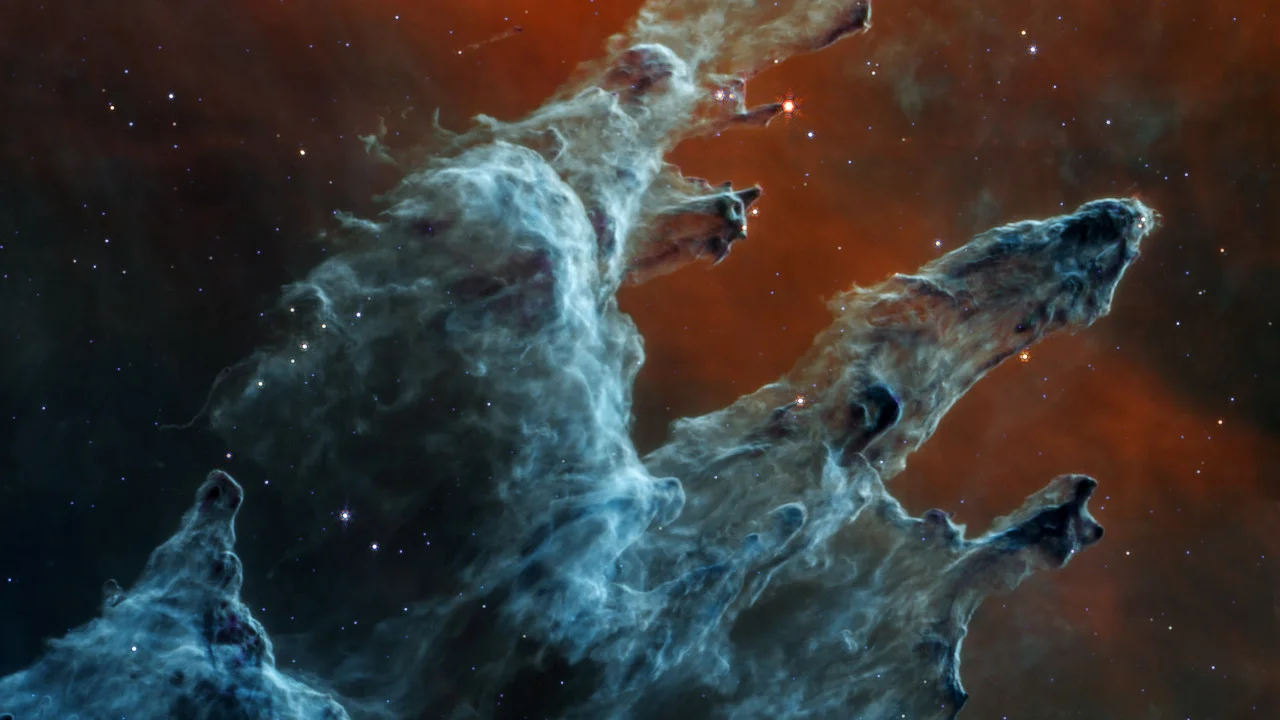
Ten spooky Halloween sights from the boundless depths of the space!
When you stare out into the darkness of space, sometimes the darkness stares back.
Space is beautiful, but at the same time, there are also many creepy and spooky sights to behold in its boundless depths.
1. The Hallowe'en Asteroid
On October 31, 2015, an asteroid named 2015 TB145 slipped by Earth, just beyond the Moon's orbit. As it passed, the Goldstone Observatory, the Green Bank Telescope, and the Arecibo Observatory all bounced radar waves off the asteroid, producing images of its surface.
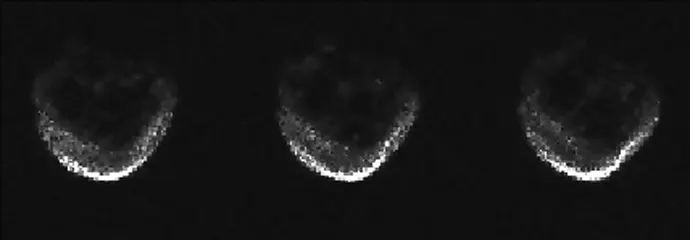
Asteroid 2015 TB145 as imaged by Arecibo radar. Credit: Arecibo/NSF
Part-way into the observations, astronomers watched as this roughly 600-metre-wide space rock turned a skull-like visage towards us.
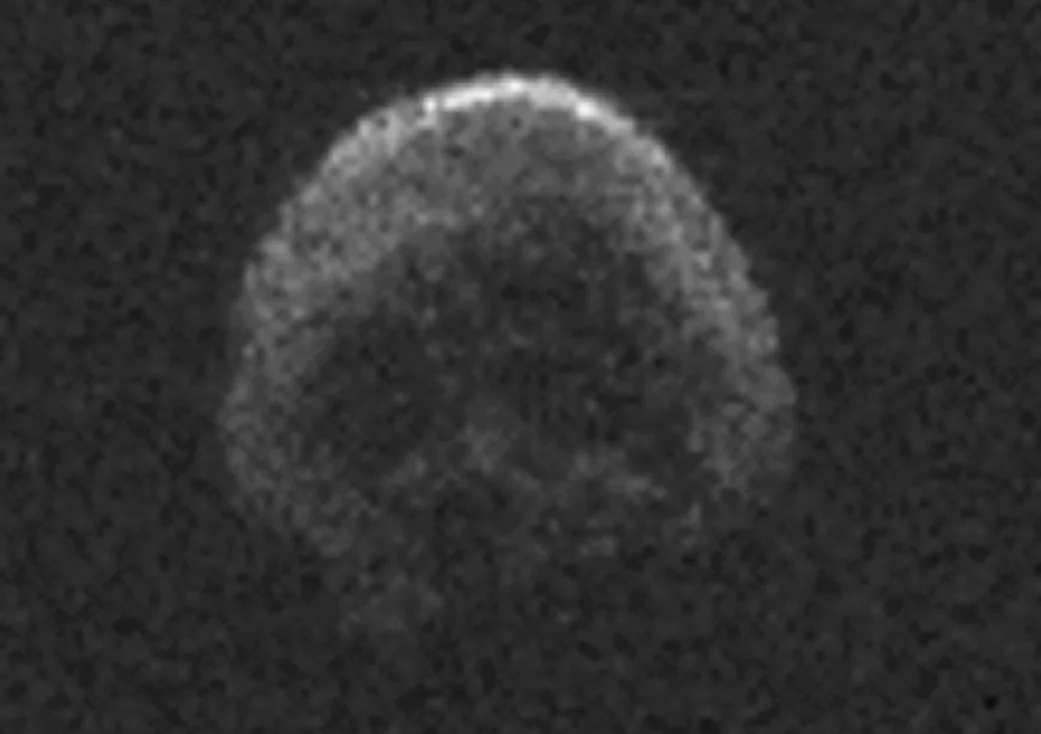
Credit: Arecibo/NSF
Dubbed the Halloween Asteroid it was revealed to be fairly special. It may be a dead comet!
Comets are immense chunks of ice, dust, gas, and rock, which are left over from the formation of the solar system. When a comet enters the inner solar system, the heat from the Sun causes it to send out streamers of gas and dust. This forms a cloud around it, called the coma, and as it moves through space, it produces two long tails.
Repeated trips around the Sun cause it to lose more and more ice, gas, and dust. If the comet does this enough times, it can run out of these 'resources'. What's left is a rocky remnant that was, perhaps, the original nucleus around which the comet formed, long ago.
Now, asteroid 2015 TB145 is not the leftover skull of some immense celestial being. Instead, the 'face' is simply a result of shadowed craters and pits in the asteroid's lumpy surface.
2. "Eye of the Cyclops"
Back in April of 2014, the Hubble Space Telescope was aimed at the planet Jupiter and its Great Red Spot. This immense, Earth-swallowing superstorm has been churning away there for hundreds of years, and astronomers have been observing it since the late 1800s.
Right in the middle of Hubble's observations, the Great Red Spot looked back!!
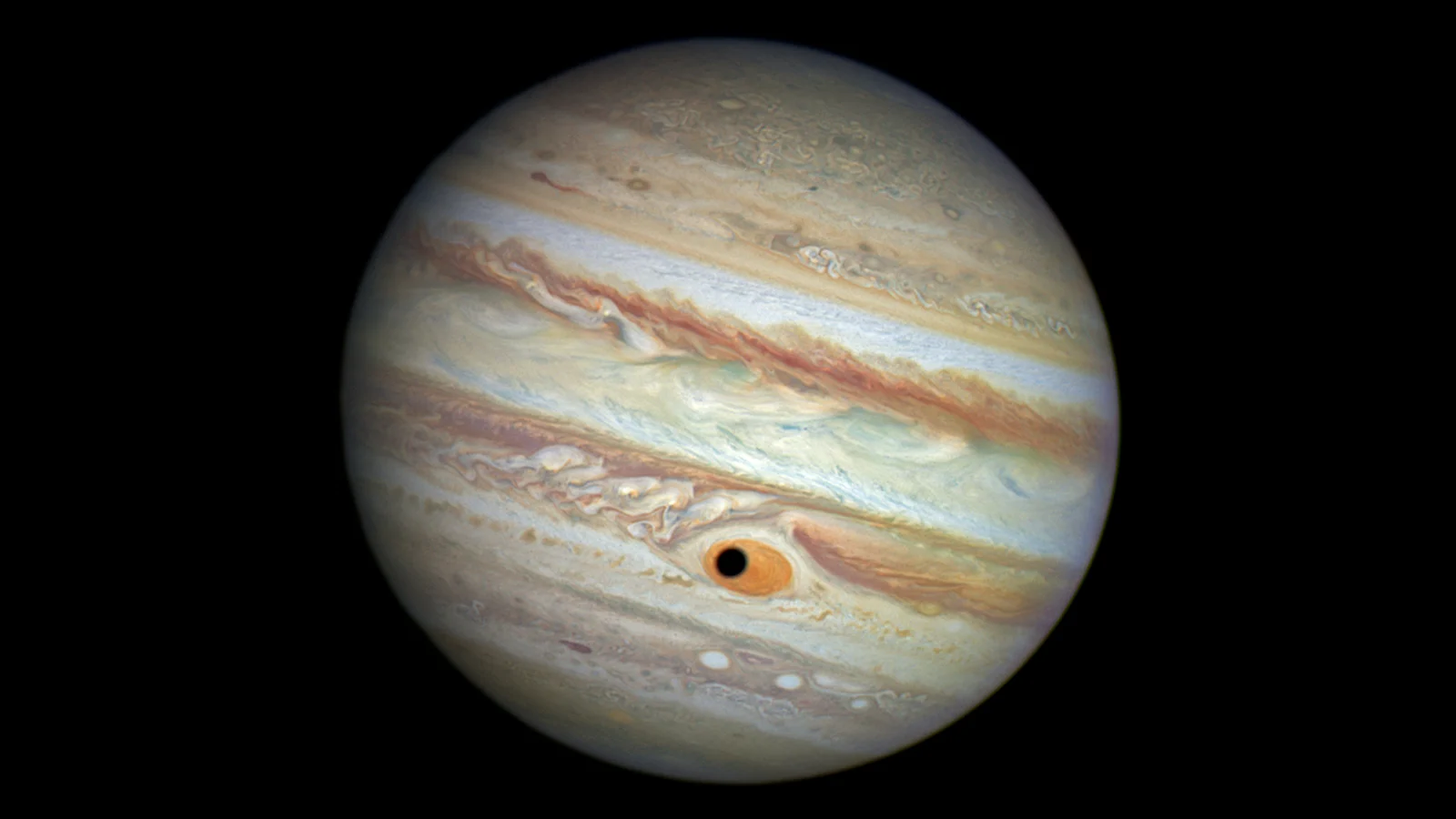
Jupiter in April 2014. Credits: NASA, ESA, Hubble Space Telescope
What's happening here?!
Jupiter has many moons (79 that we currently know of). When the four largest — Io, Europa, Ganymede and Callisto — cross the day-lit side of the planet, they cast shadows onto the cloud tops that are large enough to be seen from Earth!
On April 21, 2014, as the Hubble Space Telescope was aimed directly at Jupiter, the shadow of its largest moon, Ganymede, was crossing the planet's face. In the process, it passed directly over the Great Red Spot. NASA called the resulting image The Eye of the Cyclops.
3. Solar Jack-o'-lantern
In October of that same year, the Sun appeared to be fairly quiet. Only a few small sunspots marred the surface of its photosphere.
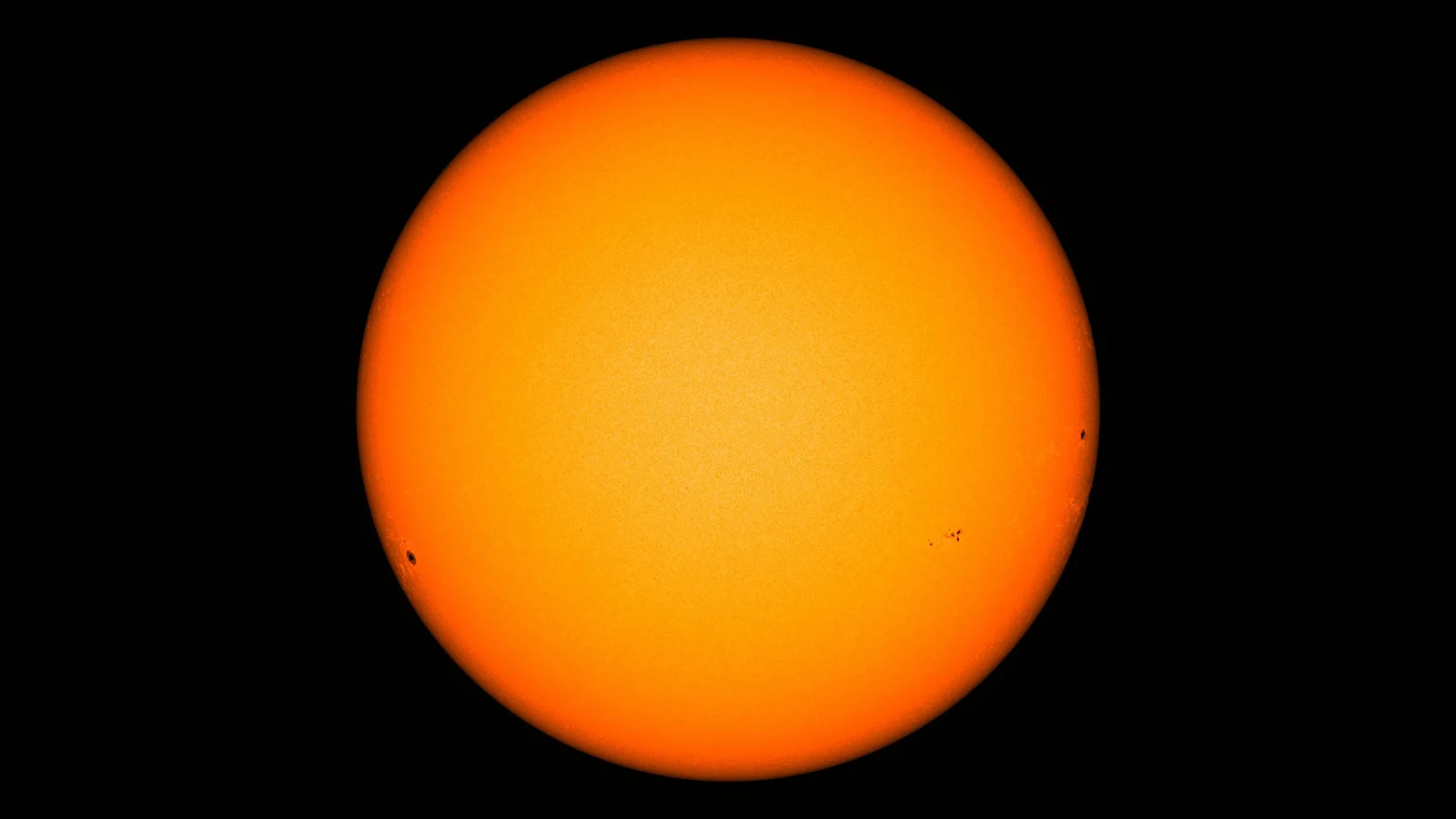
This image of the Sun's photosphere was captured by NASA's Solar Dynamics Observatory (SDO) on October 8, 2014. Credit: NASA
However, NASA's Solar Dynamics Observatory, which orbits Earth in the ring of geosynchronous satellites, watches our Sun in a variety of wavelengths of ultraviolet light. Each of its filtered views highlights a different form of solar activity.
Combining two of those views from October 8, 2014, revealed a hidden jack-o'-lantern grinning at us.
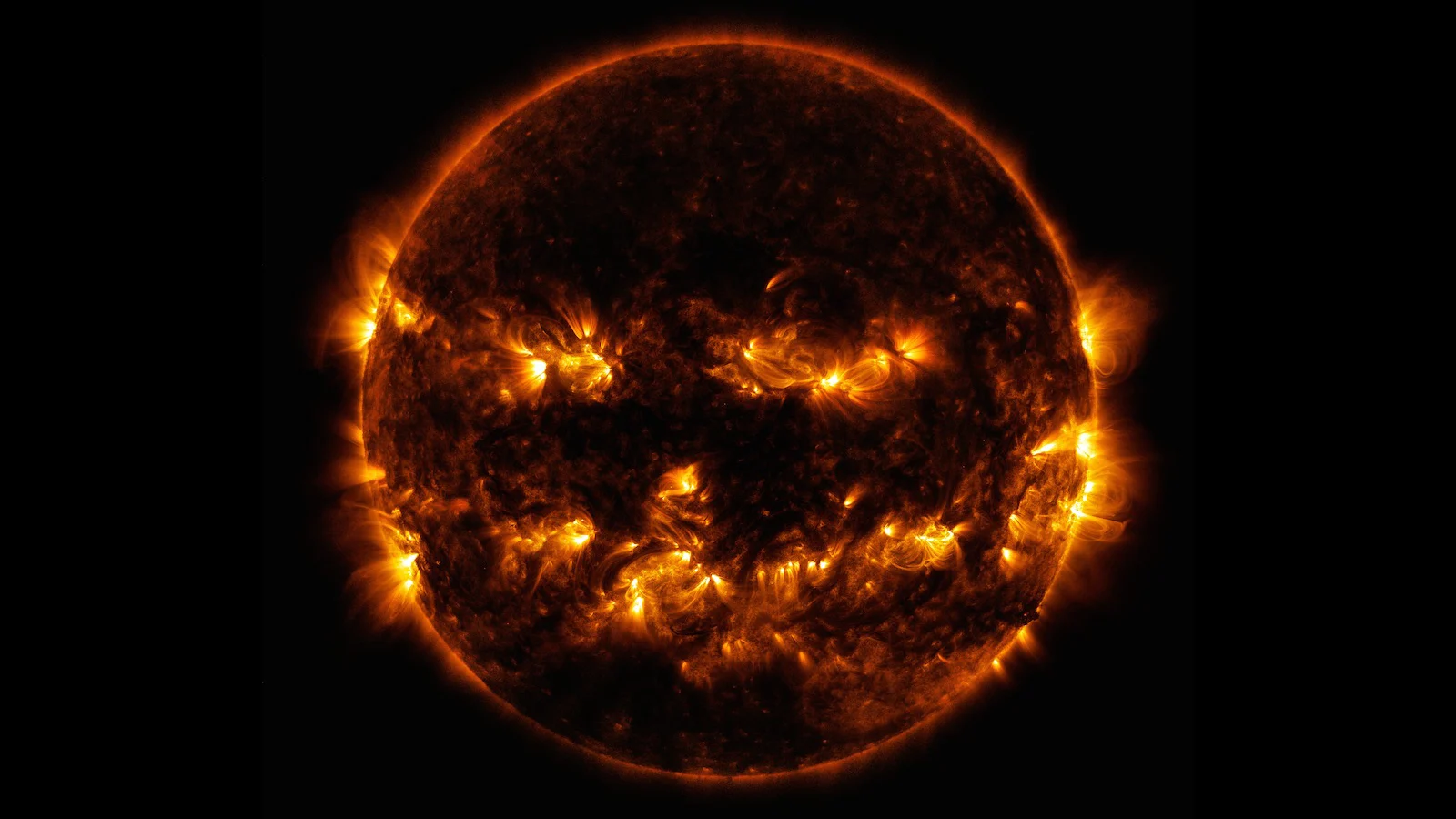
This image is a blend of two wavelengths of extreme ultraviolet light, as captured by SDO at roughly the same moment as the photosphere image, above. Credit: NASA
According to NASA: "The active regions in this image appear brighter because those are areas that emit more light and energy. They are markers of an intense and complex set of magnetic fields hovering in the Sun's atmosphere, the corona. This image blends together two sets of extreme ultraviolet wavelengths at 171 and 193 Ångströms, typically colourized in gold and yellow, to create a particularly Halloween-like appearance."
4. The Eye of Sauron
One of the brightest stars in the southern sky is called Alpha Piscis Austrini, or by its more common name, Fomalhaut. When astronomers focused the Hubble Space Telescope at the star in 2004, they discovered it bears an uncanny resemblance to an icon of fantasy literature — the lidless, flaming Eye of Sauron, from J.R.R. Tolkien's Lord of the Rings.
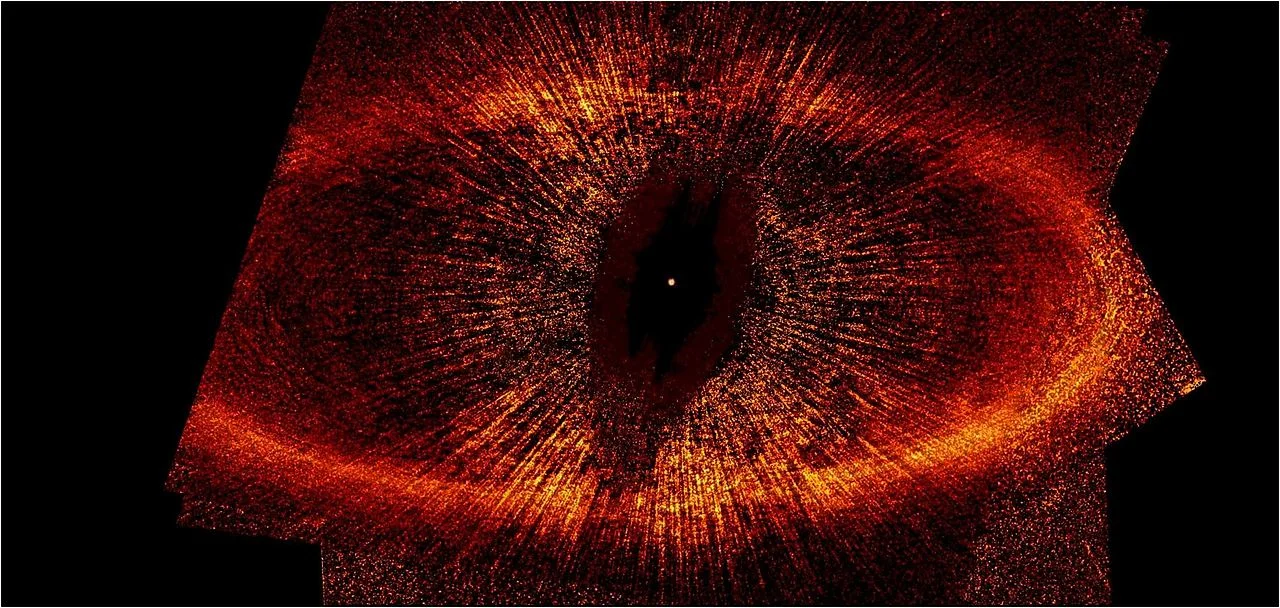
The Fomalhaut star system, roughly 25 light years away from Earth. Credit: NASA, ESA, P. Kalas And J. Graham (University of California, Berkeley) and M. Clampin (NASA/GSFC)
"You know of what I speak, Gandalf. A great eye, lidless and wreathed in flame." — Saruman the White to Gandalf the Grey. Lord of the Rings: The Fellowship of the Ring.
What's making the Fomalhaut star system appear this way? Well, I suppose we're still not quite sure.
Fomalhaut is a fairly young star, only around 440 million years old. As such, it is still surrounded by a disk of debris formed by the collapse of the same nebula from which the star was born. Up until a couple of years ago, astronomers thought the gravity of a giant planet, similar to Jupiter, was shepherding the debris into this shape. Images from Hubble appeared to confirm this, as they seemed to capture a bright spot in the ring that was likely the very planet that was carving up the disk.
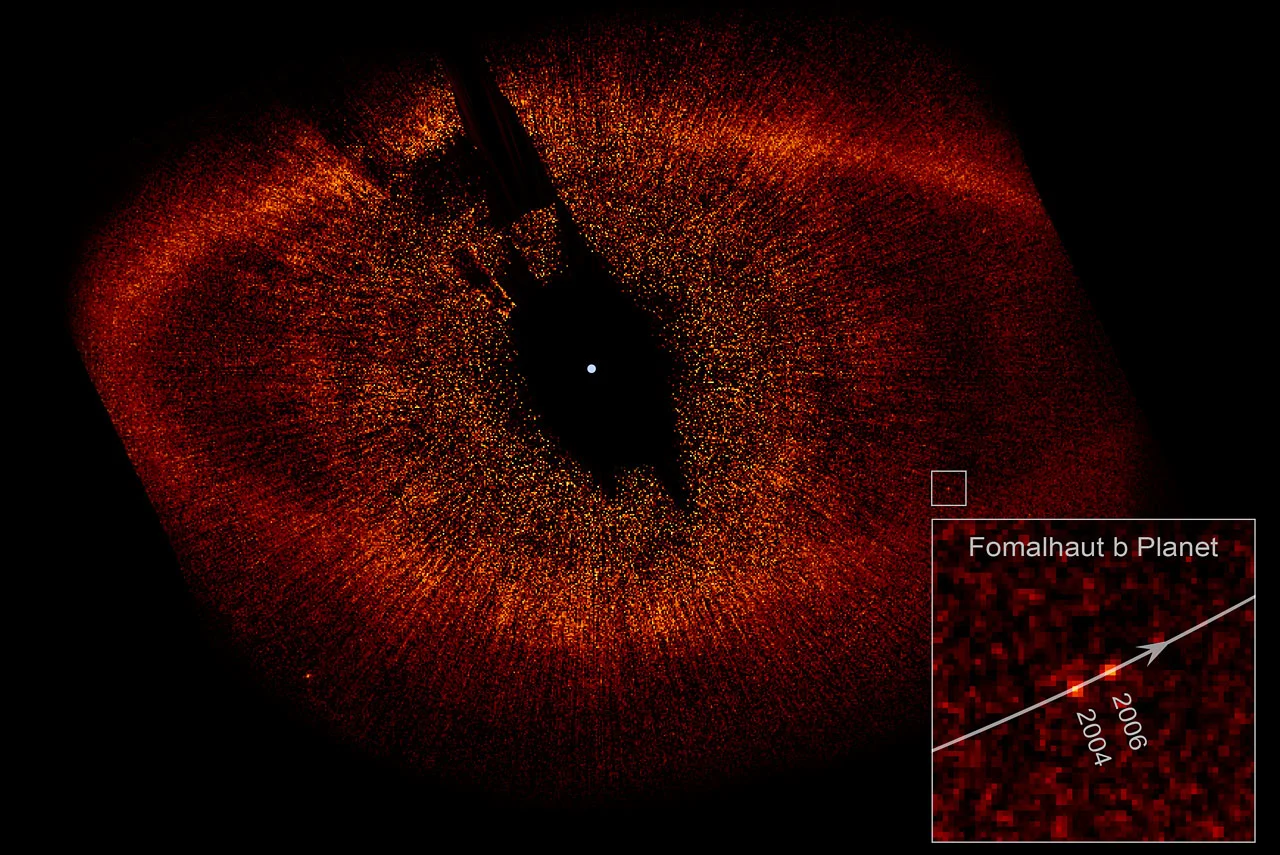
Updated images of Fomalhaut b show the original dot of the 'planet' slowly disappearing over time. Credits: NASA, ESA, and A. Gáspár and G. Rieke (University of Arizona)
However, in 2020, a new study revealed that this 'planet' was actually a ghost! (Okay, it was actually most likely a bright region caused by the collision of two planetesimals, which then dissipated as the debris spread away from the impact site, but still!)
5. "The Eye of God"
Far out in space, another 'eye' stares back at us.
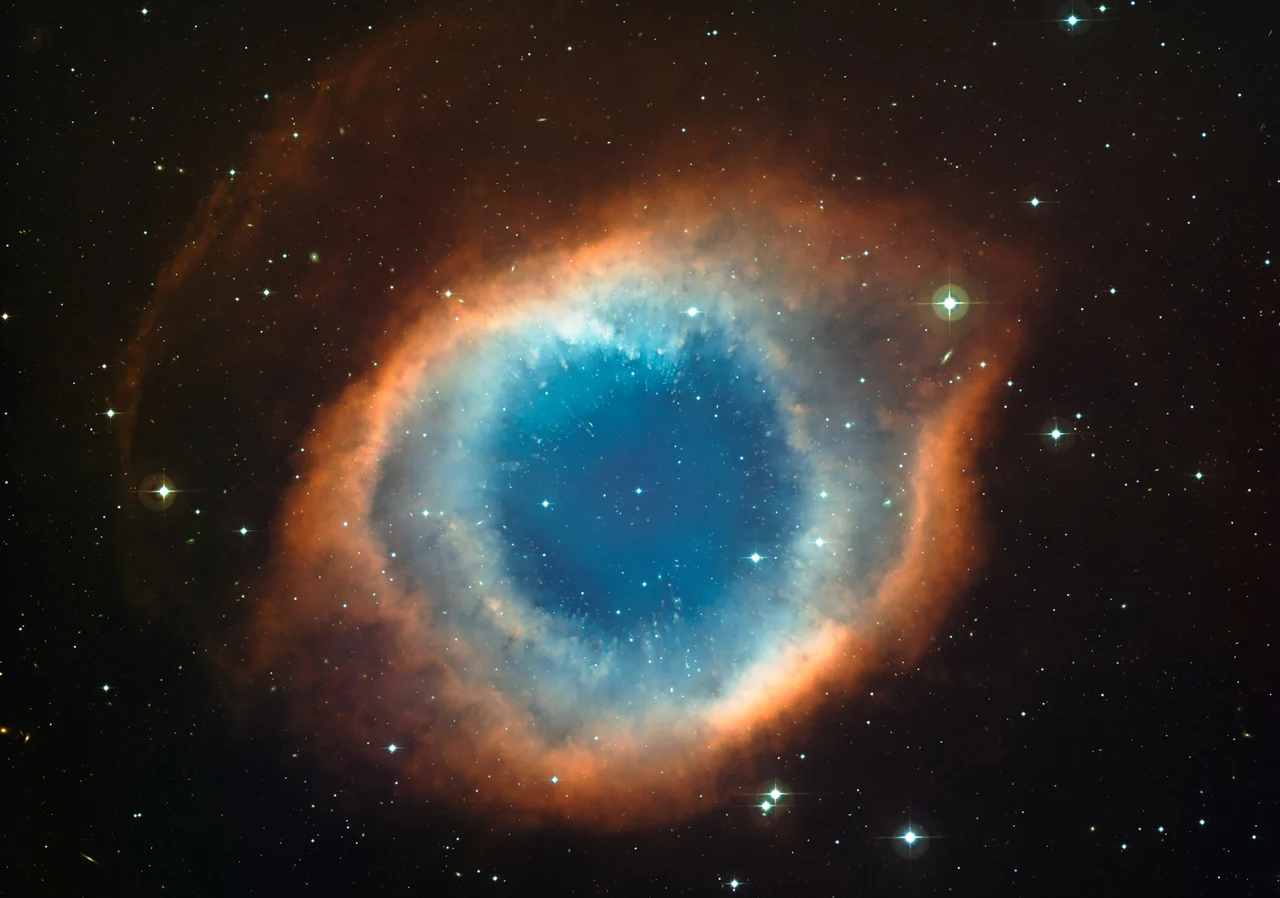
The Helix Nebula. Credit: NASA, ESA, and C.R. O'Dell (Vanderbilt University)
Perhaps some 10,000 years ago, an ancient Sun-like star in the constellation Aquarius reached the end of its lifespan. After growing into a swollen unstable red giant star, it threw off its outer layers as it died. As those layers of gas expanded outwards at high speed, they produced an immense shell in the shape of a flattened sphere, over five light years across. Astronomers call this object the Helix Nebula.
From our perspective here on Earth, we are essentially looking at an immense bubble in space. Since the edge of the bubble is relatively thin, we can see through into the middle of the space within. Along the sides, we're seeing the 'skin' of the bubble edge-on, so it shows up much more clearly.
So, the nebula ends up looking like a great eye to us. Some have called this another Eye of Sauron, while others have nicknamed it the "Eye of God".
6. A Haunting Nebula
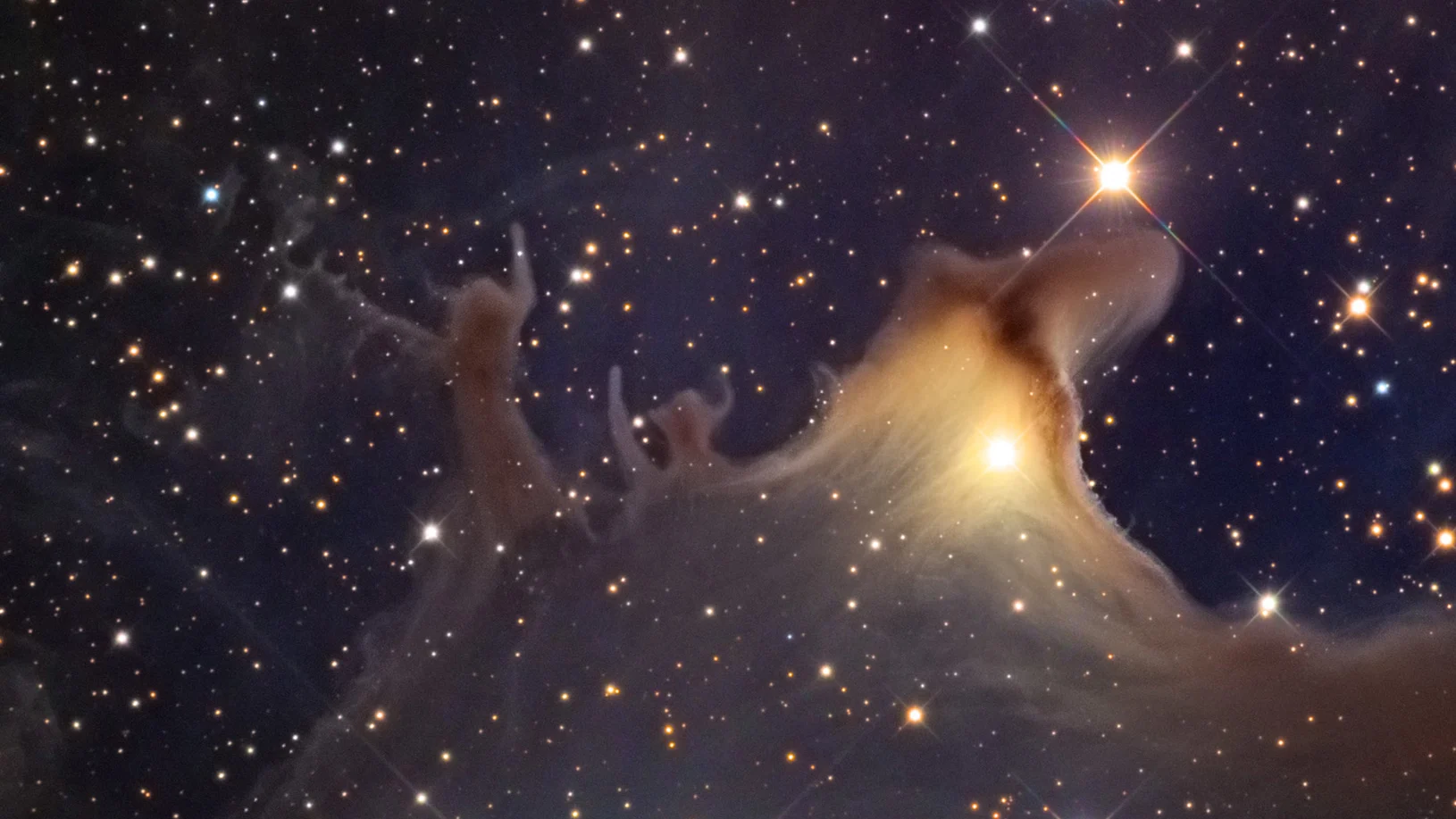
The Haunts of Cepheus. Credit: Adam Block/Mount Lemmon SkyCenter/University of Arizona
If this haunting view brings to mind a ghostly pursuit, with apparitions fleeing from a menacing spectral hunter at their heels, you can easily be forgiven for that bit of pareidolia.
This nebula is located roughly 1,500 light years away from us in the constellation Cepheus. Although it goes by the name vdB 141 in astronomical journals, it is more commonly known as the Ghost Nebula. The shapes we see here are due to the gas and dust of the nebula reflecting the light from the nearby bright stars (such as the one towards the top right of the image and the one near the 'spectral hunter').
This nebula would probably look very different if viewed from another angle, such as from the surface of an exoplanet in another star system. Whether it would be more or less spooky, though, is up for debate!
7. Creeping Space Tendrils
In November 1572, a bright star appeared in the night sky which had never been seen before. It was a supernova — the explosion of a dying star. Formally named SN 1572, it is also called Tycho's Supernova, since it was Danish astronomer Tycho Brahe who documented the event at the time.
Point a standard optical telescope at the location of this supernova now, and you will see nothing but a field of stars.
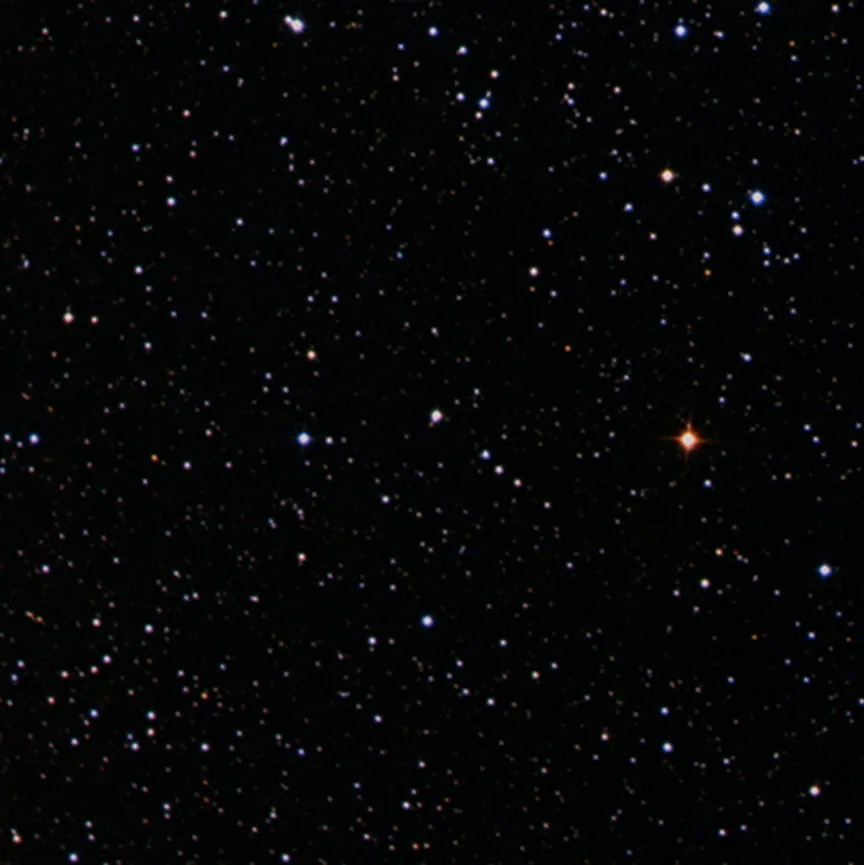
Credit: Digitized Sky Survey
However, if you point NASA's Chandra X-ray Observatory at it, instead, it reveals a mass of creepy tendrils reaching out into space!
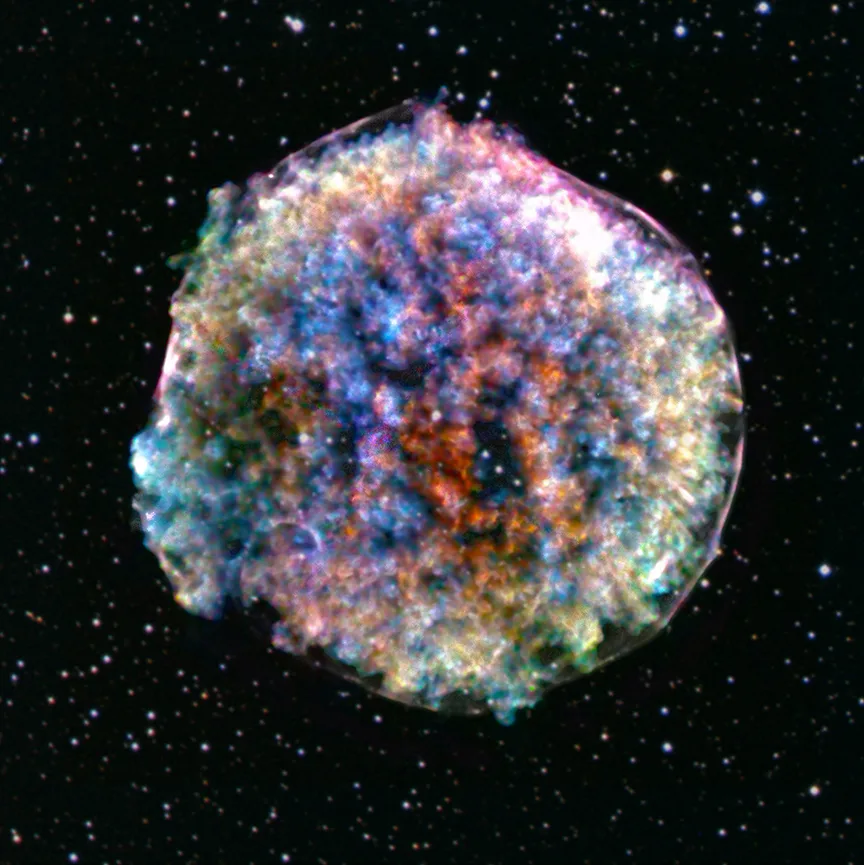
Invisible tendrils of creeping doom reach out towards us from a dead star in this X-Ray view of the Tycho Supernova Remnant. Credit: NASA/CXC/RIKEN & GSFC/T. Sato et al
These tendrils are streamers of gas expanding outward from the location of the supernova. While the tendrils are too thin to be seen in visible wavelengths of light, the gases in them are still hot enough that the light they emit includes high-energy x-rays. Chandra is designed to detect these x-rays.
The colours in the image represent x-rays of different energies, as well as x-rays specifically emitted by the element silicon (moving towards us, in blue, and away from us, in red). The strange appearance of these tendrils is apparently due to clumps of gas that were formed during the star's uneven explosion, possibly due to the supernova having more than one ignition point in the star's core.
8. Skull in the Stars
Far out in space is the Perseus Cluster, an enormous cloud of superheated gas that contains thousands of galaxies. It is among the most massive objects in our visible universe.
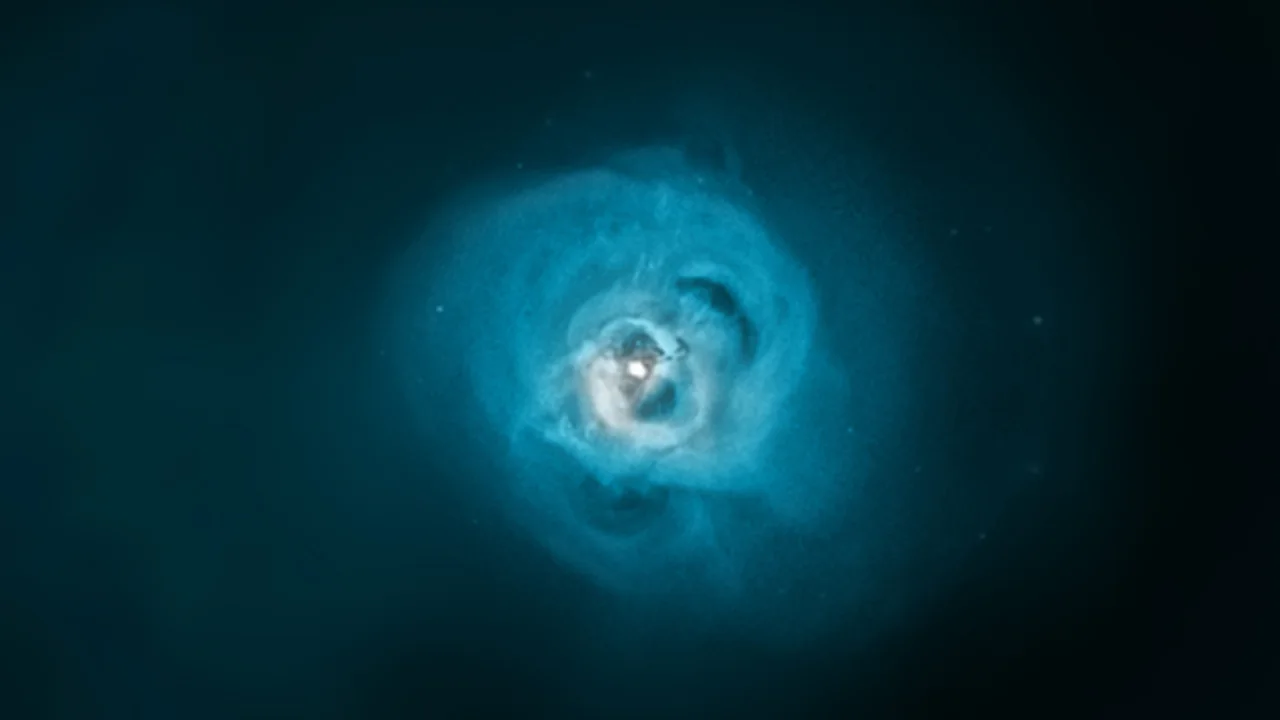
The Perseus Galaxy Cluster. Credit: A. Fabian (IoA Cambridge) et al., NASA
While the x-ray image of the Perseus Cluster, above, gave astronomers a tantalizing glimpse at what might be dark matter, a simple rotation of the image reveals something else...
A horrible screaming skull.
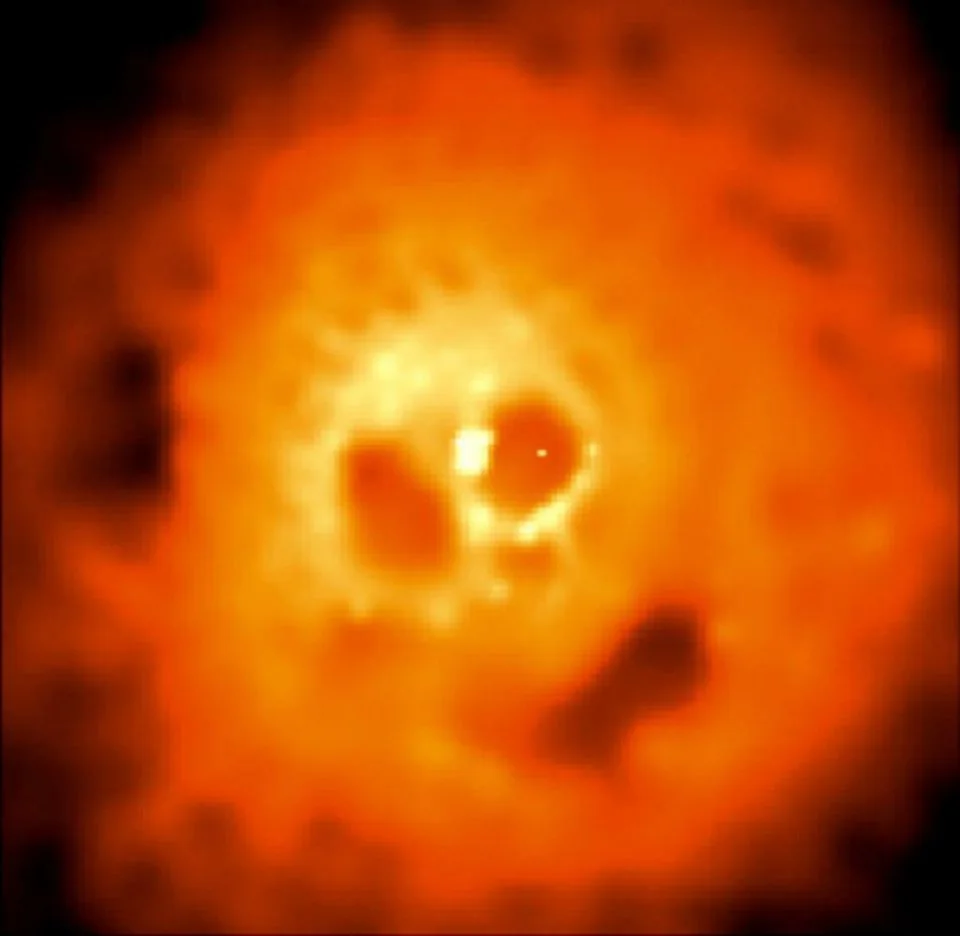
The Screaming Space Skull. Credit: A. Fabian (IoA Cambridge) et al., NASA
According to NASA: "This haunting image from the orbiting Chandra Observatory reveals the Perseus Cluster of Galaxies in x-rays, photons with a thousand or more times the energy of visible light. Three hundred twenty million light-years distant, the Perseus Cluster contains thousands of galaxies, but none of them are seen here. Instead of mere galaxies, a fifty million degree cloud of intracluster gas, itself more massive than all the cluster's galaxies combined, dominates the x-ray view. From this angle, voids and bright knots in the x-ray hot gas cloud lend it a very suggestive appearance. Like eyes in a skull, two dark bubbles flank a bright central source of x-ray emission. A third elongated bubble (at about 5 o'clock) forms a toothless mouth."
9. Galactic Menace
In October 2019, the Hubble Space Telescope released a new image of a menacing looking 'face'.
Rather than a baby planetary system, a nebula, or a supernova remnant, this image shows two entire galaxies in the midst of a "titanic head-on collision" dubbed Arp-Madore 2026-424.
"Each 'eye' is the bright core of a galaxy, the result of one galaxy slamming into another," says Hubblesite.org. "The outline of the face is a ring of young blue stars. Other clumps of new stars form a nose and mouth."
Galaxy collisions are not a rare occurrence, based on the images returned by telescopes like Hubble. A 'head-on' collision like this one apparently is, though. Also, Hubble appears to have captured this particular collision at just the right time, too, since these ring-like galaxies only form with very specific types of collisions, and they only look like this for a relatively short amount of time.
10. A Cosmic Spectral Hand
Two weeks ago, NASA unveiled a new look at the famous Pillars of Creation. This tiny section of the Eagle Nebula was first spotted by Hubble back in 1995, and was identified as a dust-rich star-forming region. Once the James Webb Space Telescope launched and was fully deployed, astronomers used it to revisit this region of space.
Webb is able to look at the universe in different wavelengths of infrared light. When those different wavelengths are combined into one image, it can result in some amazing sights.
However, combine just the right wavelengths from Webb's instruments and things get spooky!
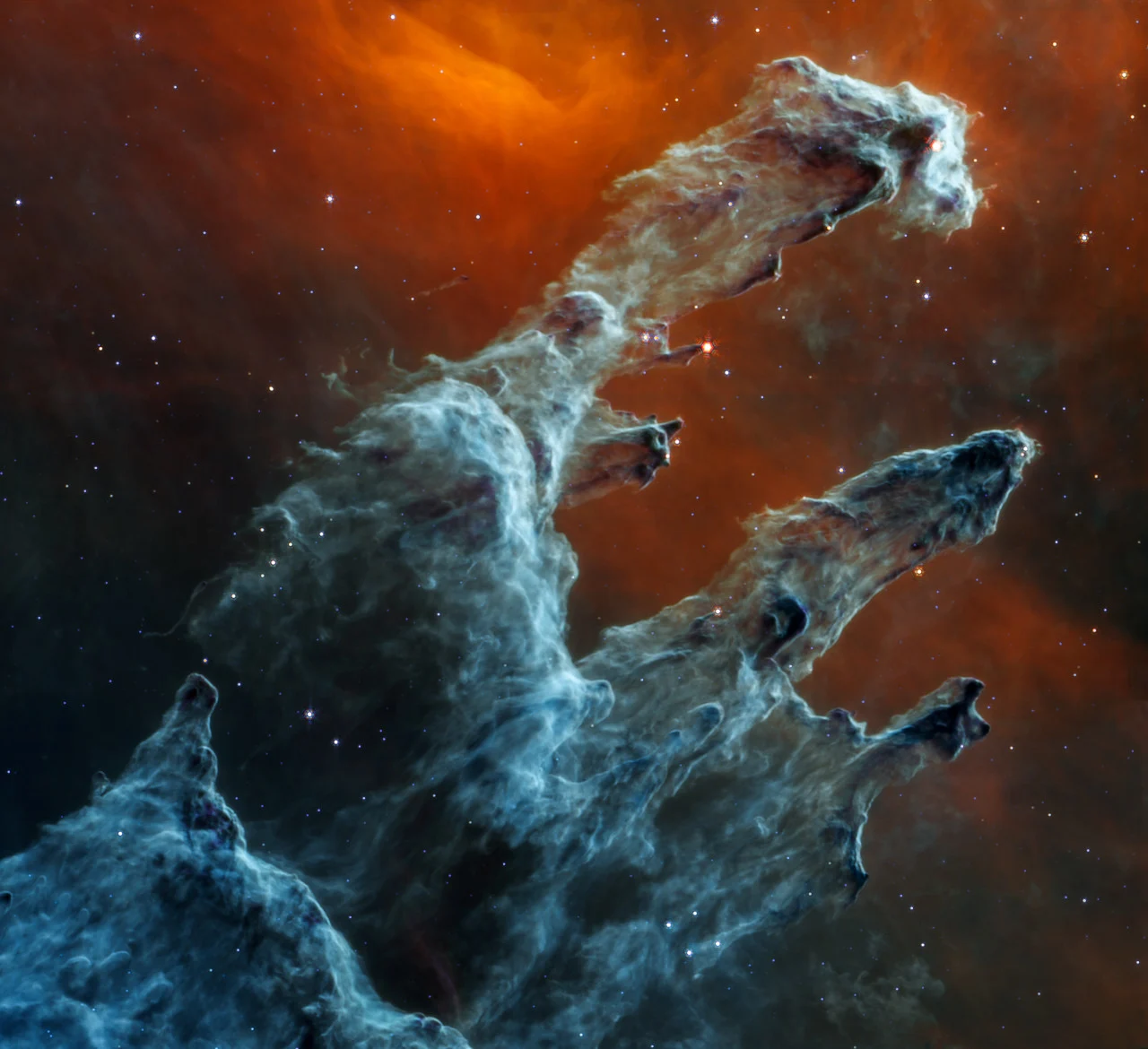
The latest image of the Pillars of Creation is seen here in mid-range infrared light from the JWST's Mid-Infrared Instrument (MIRI). Credit: NASA/ESA/CSA/STScI/Joseph DePasquale (STScI)/Alyssa Pagan (STScI)
"Why does mid-infrared light set such a somber, chilling mood in Webb's Mid-Infrared Instrument (MIRI) image?" the JWST site said. "Interstellar dust cloaks the scene. And while mid-infrared light specializes in detailing where dust is, the stars aren't bright enough at these wavelengths to appear. Instead, these looming, leaden-hued pillars of gas and dust gleam at their edges, hinting at the activity within."
Happy Halloween!











